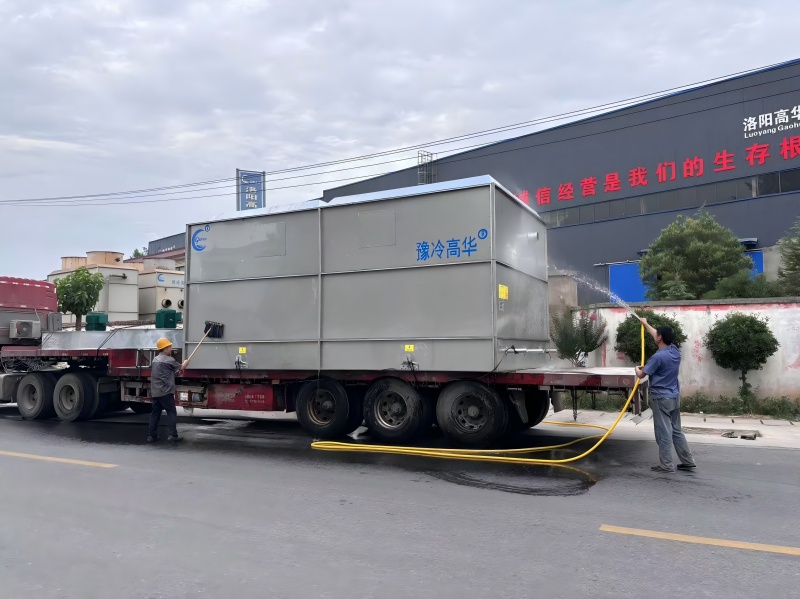The heat transfer process of an evaporative condenser combines three mechanisms: evaporative cooling, forced convection, and phase change heat transfer. Its core principle can be divided into the following three stages:
1. Spray water evaporation cooling (latent heat dominant)
Process:
The spray water pump evenly sprays cooling water onto the surface of the heat exchange coil, forming a water film; At the same time, the fan drives the air to sweep horizontally or counter current over the coil.
Water film evaporation: Part of the water absorbs heat from the refrigerant inside the tube and evaporates (latent heat exchange, approximately 2260 kJ/kg).
Evaporation efficiency: depends on the wet bulb temperature of the air, evaporation formula

Water vaporization latent heat effect:
The temperature of the spray water approaches the wet bulb temperature of the air (usually 5-15 ℃ lower than the dry bulb temperature).
Water saving advantage: Compared to pure water cooling systems, water consumption is reduced by 60% to 80%.
2. Forced convection of air (sensible heat assist)
Process:
The unevaporated water and air come into direct contact with the surface of the coil and further cool the coil through sensible heat exchange.
Sensible heat transfer:

Effect:
The air temperature rises (usually the outlet is 3-8 ℃ higher than the inlet).
The spray water is cooled by air and flows back to the water tank for recycling.
3. Refrigerant condensation (phase change heat transfer)
Process:
High-temperature and high-pressure refrigerant vapor flows inside the coil, releasing heat and condensing into liquid.
Condensation heat transfer:
![]()
Effect:
The condensation temperature of refrigerant is 5-10 ℃ higher than the ambient wet bulb temperature (approaching temperature).
Typical condensing temperatures: Ammonia (NH3) 30-35 ℃, Freon (R134a) 35-40 ℃.
